Thelonius Monk‘s sheet music transcriptions are available from our Library.
Chords and Voicings: From Lead Sheet to Performance
In modern jazz, seventh chords specified by lead sheets may appear simply as shown in figure 4.2a, but musicians rarely follow what the lead sheet specifies to the letter. Well before Thelonious Monk came on the scene, jazz pianists vied to distinguish themselves with ingenious voicings. A kind of common practice prevailed in bebop, though we emphasize that musicians can and did step outside this practice in search of particular expressions and logics. In the main, though, four complementary techniques developed, two concerning voicing as such and two concerning chord choice—what chord to play where:
Voicing
• Extension and omission: addition of tones foreign to the chord proper, and/or dropping tones that are part of it
• Spacing and doubling: distribution of a voicing on the piano or among instruments in an ensemble.
Harmonic choice
• Substitution: replacement of one chord by another with equivalent function
• Insertion and deletion: increase or decrease in the rate of harmonic motion by adding to or subtracting from changes specified on the lead sheet.
Extension, omission, spacing and doubling
Figures 4.2b and 4.3 illustrate possibilities for extending minor seventh, dominant seventh, and major seventh harmonies, and apply them to the initial ii–V–I of ISC. In the first staff each chord is extended upward by thirds beyond the seventh to include the ninth, eleventh, and thirteenth above the root. Each of the resulting seven-note stacks of thirds includes all notes of the D major scale. The fact that all three chords extend through the exact same pitch collections, in the same intervallic arrangement (i.e., a stack of thirds), demonstrates the fundamental role that harmonic function—and not chord or voicing—plays in determining tonal meaning in jazz.
The chords could in some cases even be voiced in identical ways, but their functional context would make them heard and understood differently. Here is a significant way in which, it seems to us, jazz harmony differs in emphasis from European practice.
To the extent that the distinction between ii, V, and I voicings blurs, what is it precisely that distinguishes their functions? The second staff shows which of the seven diatonic tones are directly involved in the progression toward and away from the V chord’s tritone.
Typically, these tones are necessary and sufficient to convey harmonic function. Surprisingly for anyone familiar with European harmony, neither the fifth nor the root of the chord are necessary; indeed these may be dropped (and possibly supplied by a bass player, but not necessarily). But in order to convey function and quality most effectively, the essential tones are typically arranged in the lower register of the voicing, with extension tones higher up.
The third staff of figure 4.2b distills the optional diatonic tones, which may be used without diluting function or quality, and the fourth staff shows how the tonic note (D) and the fourth scale step (G) are carefully avoided in the dominant and tonic chords, respectively, so as not to carry them over from the chords that precede them, which would impede the ii–V–I motion (see dashed arrows).
Outside the diatonic pitch collection remain fi ve tones completing the chromatic aggregate, which can provide rich “upper structures” to voicings. In some cases these work against important diatonic intervals; for example, using a G with the Em chord could obscure the minor third between E and G; using it with the A7 chord would weaken the C#/G tritone. But with the DM7 it sounds all right because its diatonic “shadow,” G, is already avoided. Figure 4.3 sketches the effect of chromaticism in each chordal context.
All optional diatonic and chromatic tones may be withheld or used, and they may be spaced from low to high in limitless ways. Attention is paid to the choice of lowest pitch, the registers of all others, thickness (number of notes played at once), and the use of some pitches in more than one octave doubling. This topic is discussed later in reference to specifi c instances in short excerpts by pianists Bill Evans and Oscar Peterson (figures 4.4a and b), and also at length in relation to Monk.
Chord Substitution, Insertion, and Deletion
Because every dominant-quality seventh chord shares its tritone with the dominant-quality seventh chord whose root is a tritone away, the chords in each such pair may be substituted for one another ( figure 4.2c, first staff).

Substitutions for V are idiomatic in ii–V–I motion. In D major, this turns Em7–A7–DM7 into Em7–Eb7 –DM7 and causes the roots to descend chromatically by half step rather than by fifth, an especially characteristic marker of modern jazz sound. The second staff of figure 4.2c illustrates another kind of substitution, involving change of chord quality. In the first stage, the ii of

the ii–V–I progression is intensifi ed by raising its third from G to G# . This makes it E7, a dominant seventh chord, that is, V7 in relation to the A7 chord, and thus “tonicizes” the root of A7 as if A were momentarily the home key. From here it is a matter of applying the tritone substitution principle just discussed to convert the pair of chords into progression from Bb7 to Eb7. Monk does just this in ISC ( figures 4.1 and 4.5 , mm. 15-16).
Harmonic rhythm is the rate at which harmonies change. A scan of the various versions of ISC in figure 4.1 shows chords changing usually every two or four beats, though Oscar Peterson achieves special intensity in mm. 1-2 by changing on each beat, and there are scattered instances of chords held longer. Since harmony’s depth of field is rich, even with these severe constraints on harmonic rhythm there can be infinite ways to realize the harmonies in a song and suggest unexpected aural routes through it.
Sometimes root progressions by fifth are concatenated, as in figure 4.1, staff 2, mm. 2-3. Here, rather than have mm. 3-4 be a repetition of mm. 1-2, as it is in Monk’s version (staff 3), the ii chord of m. 3 is treated as a local tonic and preceded by its own ii–V. The two new bass tones F and B are part of the D major scale, so the motion feels activated but the connections do not jar.
The major third (D#) of the B7 chord is the only chromatic alteration implied. In Bill Evans’s version, the bass player faithfully provides the root tones (figure 4.4b), but Evans does not reflect the change on the piano. Without the D#, the feeling of tonicization is absent, and we have labeled the chord as Bm7.
Earlier we mentioned a more deeply hued insertion, at mm. 8 and, which introduces a ii–V (Gm7 to C7) progression borrowed from F major, a key built on a tonic foreign to the D major scale. This motion is so distinctive that it might be heard as one of the strongest markers of the song as a whole. In the fake book version, after slipping momentarily toward F in this way the music slips right back to DM7 in m. 9.
Monk, however, reinterprets the C7 as a tritone substitution for an F#7, and resolves in m. 9 to Bm7 (the fake book does this too, but later, at the parallel moment in mm. 25). Another insertion in the fake book version, reflecting a mix of diatonic and chromatic moves, comes at the final measures (31-2).
This characteristic “turnaround” revs up the motion, propelling the music toward the next repetition of the form. Monk’s seeming extension of this passage and the two prior measures reflect a musical action we shall describe later; in figure 4.1 we condense his chords into the thirty-two-measure form (the actual measure numbers cor-responding to mm. 29-38of the transcription in figure 4.5 are shown below the lowest staff).
Deletions put the brakes on chord progression. In this idiom they are somewhat rarer than insertions but noteworthy for that reason. When Monk slows down the fake book chords at m. 2 he wants to focus on the very repetition of the chord progression in the initial two pairs of measures, and when he does it again at mm. 15-16 it is as if we are asked to savor the tritone substitutions selected for those moments.
Modern jazz harmonic practice often seems to be founded on the intensifi cation and complexifying of its diatonic basis in the several ways we have just described all at once—so the instances in which this process is slowed or impeded provide a special repose.

Browse in the Library:
| Artist or Composer / Score name | Cover | List of Contents |
|---|---|---|
| Bach J.S. Cello Suite No. 6 arr. piano solo by Joachim Raff |
 |
|
| Bach J.S. Cello Suite No.1 arr. for piano solo |
 |
|
| Bach J.S. Das Musikalisches Opfer BWV 1070 |
 |
|
| Bach J.S. Fifield Transcription Cantata BWV 147 Jesu, Joy of Man’s Desiring piano solo |
 |
|
| Bach J.S. Harpsichord Concerto A-major arr. 2 pianos | ||
| Bach J.S. J.S.- Das Wohltemperierte Klavier I (Urtext) |
 |
|
| Bach J.S. Marcello – BWV 974 Concert no. 3 | ||
| Bach J.S. My First Book of Bach favorite pieces in easy piano arrangements by D. Dutkanicz |
 |
Bach J.S. My First Book of Bach favorite pieces in easy piano arrangements by D. Dutkanicz |
| Bach J.S. Parodi Siciliano from BWV 1031 Piano solo transcription |
 |
|
| Bach J.S. Prelude XXIV | ||
| Bach J.S. Ricercar 6 BWV 1079 from “The Musical Offering | ||
| Bach J.S. Sarabande for cello | ||
| Bach J.S. Siciliano from BWV 1031 Piano solo transcription by Eugen D’Albert |
 |
|
| Bach J.S. Ten Choral Preludes KiV B 27 | ||
| BACH J.S. The Art Of Fugue Bach Fugues For Keyboard, 1715 1750 |
 |
|
| BACH J.S. The little music book of Anna Magdalena (20 easy pieces) |
 |
|
| Bach J.S. Toccata & Fugue Dminor for Piano |
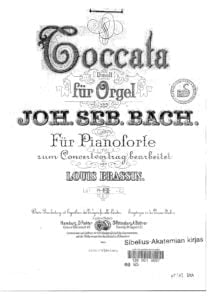 |
|
| Bach J.S. Two Transcriptions Of St. Matthew Passion For Piano Solo |
 |
|
| Bach J.S. Two-Voice Inventions |
 |
|
| Bach J.S.-Busoni BVB36 Prelude Fugue and Allegro BWV998 | ||
| Bach J.S.-Busoni BWV 933-938 | ||
| Bach J.S.-Busoni Prelude in C minor BWV 999 | ||
| Bach J.S.-BWV 1055 4 hands | ||
| Bach J.S.-Choral-BWV-639-Transcr-Busoni | ||
| Bach J.S.-Lipatti – Two Transcriptions of Bach J.S.’s Cantatas 208 | Bach-Lipatti – Two Transcriptions of Bach’s Cantatas 208 | |
| Bach J.S.-Petri – Cantata 208 “Sheep May Safely Graze” Piano solo arr. | Bach-Petri – Cantata 208 Sheep May Safely Graze | |
| Bach J.S.-Siloti- Andante from Sonata for Solo Violin BWV 1003 | ||
| Bach JS “Sheep May Safely Graze” from Cantata 208 (easy piano) |
 |
|
| Bach Liszt Prelude & Fugue In A Minor, Bwv 543 |
 |
|
| BACH Master Musicians Series by Malcom Boyd (eBook) Biography |
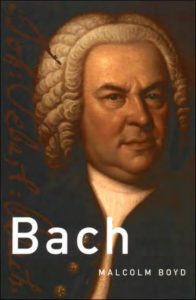 |
|
| Bach Prelude Iv Bwv 849 Wtc I (Musescore File).mscz | ||
| Bach The Goldberg Variations Cambridge Music Handbooks (eBook) |
 |
|
| Bach The Goldberg Variations Cambridge Un. Press (Book) |
 |
|
| Bach The New Bach Reader A Life Of Johann Sebastian Bach In Letters And Documents (Arthur Mendel Hans T. David Christoph Wolff) Book |
 |
|
| Bach Toccata And Fugue In D Minor (Piano Solo) (Musescore File).mscz | ||
| Bach Toccata and Fugue in D Minor BWV 565 (Piano solo arr.) |
 |
|
| Bach Toccata And Fugue In D Minor Bwv 565 (Piano Solo Arr.) (Musescore File).mscz | ||
| Bach Two Part Inventions (No. 1 Bwv 772) (Musescore File).mscz | ||
| Bach-Bauer Die Seele Ruht..Cantata 127 for piano solo | ||
| Bach-Busoni – Chaconne D minor arr. piano solo |
 |
|
| Bach-Busoni Ich Ruf’ Zu Dir Herr Bwv 639 Piano Solo Arr. (Musescore File).mscz | ||
| Bach-Gouin – Harpsichord Concerto in F Minor (Arioso) BWV1056 piano |
 |
|
| Bach-Rummel Ertodt-Uns BWV22 |
 |
|
| Bach-Siloti – Praeludium In B Minor BWV 855a | Bach-Siloti – Praeludium In B Minor Bwv 855a | |
| Bach-Siloti – Praeludium In B Minor Bwv 855a (Musescore File).mscz | ||
| Bach-Siloti Transcription of Bach’s Air from Suite for String Orchestra No.3, BWV 1068 | ||
| Bach-Stradal Trio Sonata No 4 in E minor BWV 528 |
 |
|
| Bach, Johann Sebastian – Complete Lute Music (transcribed for Guitar) |
 |
|
| Bach, J. S. Concert In D Minor Bwv 1043 For Two Violins And Piano Musescore File.mscz | ||
| Bach, J.S. Jesus Bleibet Meine Freude Easy Guitar Arr. Jesu, Joy Of Man’s Desiring Cantata Nr. 147 | Bach, J.S. – – Jesu Bleibet Meine Freude Guitar arr. | |
| Bach, J.S. Jesus Bleibet Meine Freude Guitar Arr. Jesu, Joy Of Man’s Desiring Cantata Nr. 147 | Bach, J.S. Jesus Bleibet Meine Freude Guitar Arr. Jesu, Joy Of Man’s Desiring Cantata Nr. 147 | |
| Bach, J.S. Orchestral Suite No. 1 In C Major Bwv 1066 Passepied (Easy Piano Solo) |
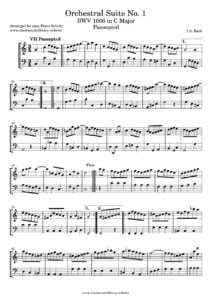 |
|
| Bach, J.S. Arioso For Piano Solo BWV 156 |
 |
|
| Bach, J.S. For Electric Guitar [Guitar SongBook] |
 |
Bach, J.S. For Electric Guitar |
| Bach, J.S. Myra Hess Chorale from Cantata 147 Jesu Joy Of Man’s desiring Hess Myra piano solo Arrangement |
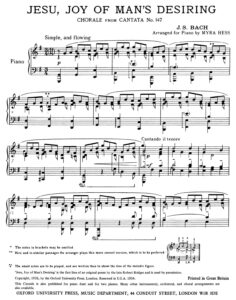 |
|
| Bach, J.S. – Jesus bleibet meine Freude Guitar arr. Jesu, Joy of Man’s Desiring Cantata Nr. 147.mscz | ||
| Bach, J.S. – Jesus_bleibet_meine_Freude_Cantata_Bwv147_10_Choral SATB with Piano by Johann_Sebastian_Bach.mscz | ||
| Bach, J.S. – Toccata and Fugue in D Minor (Piano Solo) |
 |
|
| Bach, J.S. Arioso (Guitar) from Cantata BWV 156 Guitar arr. by Per Orlov Kindgren |
 |
|
| Bach, J.S. Awake, tu us the Voice is calling – Wachet Auf, ruft uns die Stimme Piano solo arr. (Borwick) |
 |
|
| Bach, J.S. Chorale from Cantata 147 Jesu Joy Of Man’s desiring Easy piano solo Arr. |
 |
|
| Bach, J.S. Dinu Lipatti Pastorale in F ( Piano solo transcription) |
 |
|
| Bach, Johann Sebastian (bio book LUX-Lesebogen) (Deutsch-German) Biography |
 |
|
| Bach, JS Partitas Partita 1 |
 |
|
| Bach’s Well-tempered Clavier The 48 Preludes and Fugues (Book ) David Ledbetter |
 |
|
| Bachianas Brasileiras No. 5 (Heitor Villa-Lobos) | ||
| Bachianas Brasileiras No. 5 (Heitor Villa-Lobos) 2 pianos | ||
| Back To The Future Music from the Motion Picture Soundtrack Piano Vocal guitar |
 |
Back To The Future |
| Backstreet Boys – All I Have To Give | ||
| Backstreet Boys – As Long As You Love Me | ||
| Backstreet Boys – Drowning | ||
| Backstreet Boys – How Did I Fall In Love With You | ||
| Backstreet Boys – I Need You Tonight | ||
| Backstreet Boys – I Want It That Way | ||
| Backstreet Boys – Incomplete | ||
| Backstreet Boys – Quit Playing Games With My Heart | ||
| Backstreet Boys – Show Me The Meaning Of Being Lonely | ||
| Backstreet Boys As Long As You Love Me |
 |
|
| Backstreet Boys Backstreets Back |
 |
|
| Backstreet Boys Black Blue |
 |
|
| Backstreet Boys Drowning |
 |
|
| Backstreet Boys Everybody |
 |
|
| Backstreet Boys I Want It That Way |
 |
|
| Backstreet Boys Shape Of My Heart |
 |
|
| Baden Powell Manha De Carnaval Guitar Tablature Tabs |
 |
|
| Baden Powell – So Por Amor (Guitar arr. sheet music with TABs) | Baden Powell – So Por Amor (Guitar arr. sheet music with TABs) | |
| Baden Powell – Samba Do Aviao (Jobim) Guitar arr |
 |
|
| Baden Powell – Samba Em Preludio Guitar TAB |
 |
|
| Baden Powell – Serenata Do Adeus Guitar TABs |
 |
|
| Baden Powell Complete Brazil On Guitar transcriptions with Tablature |
 |
Baden Powell complete sheet music |
| Baden Powell Contemporary solo guitar (Book In Japanese) |
 |
|
| Baden Powell Prelude In A Minor (guitar) |
 |
|
| Baden Powell Retrato Brasileiro Choro Lento (Guitar) |
 |
|
| Baden Powell Songbook – Volume 1 (Guitar) |
 |
Baden Powell 1 |
| Baden Powell Songbook – Volume 2 (Guitar) |
 |
Baden Powell 2 |
| Baden Powell Songbook Volume 3 (Guitar) |
 |
Baden Powell songbook 3 |
| Badfinger – No Matter What |
 |
|
| Baghdarsaryan, Eduard 24 Preludes For Piano |
 |
|
| Baker’s Biographical Dictionary Of Popular Musicians 1990 Complete Vol 1 A L and Vol 2 M Z |
 |
|
| Balada Para Alessandro (Raul Di Blasio) | ||
| Balázs Havasidom Freedom Piano Solo Sheet Music |
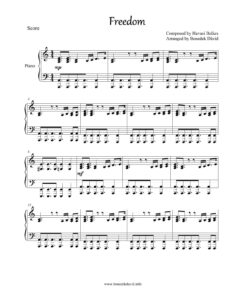 |
|
| Ballad No Name (William Joseph) | ||
| Ballade No. 1 In G Minor (Musescore File).mscz | ||
| Ballads Big Book Of Ballads 2nd Edition Piano Vocal Guitar |
 |
Ballads Big Book Of Ballads 2nd Edition Piano Vocal Guitar |
| Ballads For Classical Guitar |
 |
Ballads For Classical Guitar |
| Ballads Really easy piano (24 great songs) |
 |
Ballads Really easy piano (24 great songs) |
| Ballads The Big Book Of Ballads 3rd Edition Piano Vocal Guitar |
 |
Ballads The Big Book Of Ballads 3rd Edition Piano Vocal Guitar |
| Bambina (Lara Fabian) | ||
| Banana Boat Day-O – Guitarr Arr. With Tabs (Traditional Jamaican Folk Song (Sheet Music) |
 |
|
| Banana Boat Day-O – Guitarr Arr. With Tabs (Traditional Jamaican Folk Song (Sheet Music)) (Musescore File).mscz | ||
| Banana phone (Raffi) | ||
| Bangles – Eternal Flame | ||
| Bar Piano Susi’s – Band 1 – Swing Evergreens and Pop Classics by Susi Weiss |
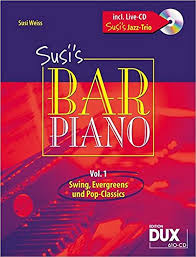 |
Bar Piano Susi’s – Band 1 – Swing Evergreens and Pop Classics by Susi Weiss |
| Bar Piano Susi’s – Band 2 – Swing Evergreens and Pop Classics by Susi Weiss |
 |
Bar Piano Susi’s – Band 2 – Swing Evergreens and Pop Classics by Susi Weiss |
| Bar Piano Susi’s – Band 3 – Swing Evergreens and Pop Classics by Susi Weiss |
 |
Bar Piano Susi’s – Band 3 – Swing Evergreens and Pop Classics by Susi Weiss |
| Bar Piano Susi’s – Band 4 – Swing Evergreens and Pop Classics by Susi Weiss |
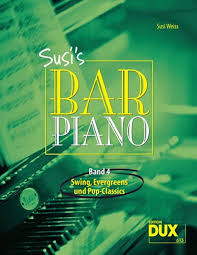 |
Bar Piano Susi’s – Band 4 – Swing Evergreens and Pop Classics by Susi Weiss |
| Bar Piano Susi’s Merry Christmas by Susi Weiss |
 |
Bar Piano Susi’s Merry Christmas by Susi Weiss |
| Bar Piano, Susi’s – Band 5 – Swing, Evergreens and Pop Classics by Susi Weiss |
 |
Bar Piano, Susi’s – Band 5 – Swing, Evergreens and Pop Classics |
| Barbara Livre D’or 18 Chansons Partition Musicale |
 |
Barbara Livre D’or 18 Chansons Partition Musicale |
| Barbara Arens Moonbeams |
 |
